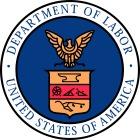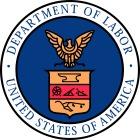Proposal makes agency allegations of employment law violations reportable events that could result in denial of federal contracts or termination of existing contracts.
Executive Order 13673 (the Order), signed by US President Barack Obama in July 2014, imposed three new requirements addressing the labor and employment practices of federal contractors and subcontractors: (1) an obligation to report employment law violations, which would be used by contracting officers to determine whether to award a new federal contract or terminate an existing contract; (2) a requirement to provide notices to workers about their Fair Labor Standards Act (FLSA) exemption or independent contractor status; and (3) a requirement that federal contractors agree that claims arising under Title VII or any tort related to or arising out of sexual assault or harassment by their employees and independent contractors will not be arbitrated without the voluntary postdispute consent of an employee or independent contractor, with certain limited exceptions.
E.O. 13673 directed the Federal Acquisition Regulatory Council (FAR Council)—which consists of the Administrator for Federal Procurement Policy, the Secretary of Defense, the Administrator of National Aeronautics and Space, and the Administrator of General Services—to publish implementing regulations through the Federal Acquisition Regulation (FAR) system. The Order also directed the Department of Labor (DOL) to publish guidelines that address transactions deemed to be reportable employment law violations, as well as how contracting officials should use such reported information to determine whether to award a federal contract (or terminate an existing contract). The Order, while effective upon issuance, expressly applies to all solicitations for contracts only as set forth in any final rule issued by the FAR Council.
On May 28, 2015, the FAR Council published a Notice of Proposed Rulemaking implementing E.O 13673.[1] On the same day, the DOL published proposed guidance.[2] The proposed rule and guidelines contain many potentially alarming provisions for employers seeking federal contracts, some of which appear to violate contractors’ due process and Fourth Amendment rights. If adopted, the proposals would impose administrative burdens on contractors, increase the complexity of obtaining and keeping federal contracts, and likely lead to an increase in bid protests and litigation.
The proposals offer employers a 60-day period to submit comments in opposition to these provisions. We strongly encourage employers that have or may seek federal contracts to take advantage of this comment opportunity. If you are interested in sponsoring comments, please contact us in the near future; the period for filing comments only runs through July 27, 2015.
Proposed Implementation of the Employment Violation Reporting Obligations
E.O. 13673 requires employers who are prospective awardees of federal contracts to report certain labor law violations that occurred within the prior three years. Awardees of federal contracts must submit reports of labor law violations every six months during the performance of the contract. The reportable violations include “administrative merits determinations,” “arbitral awards or decisions,” and “civil judgments” involving claims or enforcement actions under many federal employment laws.[3]
The proposed guidelines define “administrative merits determinations” by reference to the specific types of determinations made by a federal enforcement agency, such as the Wage and Hour Division (WHD), Office of Federal Contract Compliance Programs (OFCCP), Occupational Safety and Health Administration (OSHA), Equal Employment Opportunity Commission (EEOC), and National Labor Relations Board (NLRB). Reportable determinations also include, broadly, complaints that a federal enforcement agency files and administrative orders issued through agency adjudication. However, complaints that private parties file with enforcement agencies or in court alleging employment law violations would not trigger a reporting obligation.
Under the proposed guidance, “administrative merits determinations are not limited to notices and findings issued following adversarial or adjudicative proceedings such as a hearing, nor are they limited to notices and findings that are final and unappealable.” Thus, contractors will be required to report mere agency allegations, such as OSHA citations, WHD investigation finding letters, OFCCP show cause notices, EEOC reasonable cause determinations, and NLRB complaints. These disclosures are required even if a contractor is challenging an allegation through formal proceedings. If, at the time of the required reporting, the enforcement agency allegation is withdrawn or reversed in its entirety through additional proceedings in the matter, then there is no reporting obligation.
The DOL will publish additional proposed guidelines that address administrative determinations that state enforcement agencies make under laws that DOL deems to be equivalent to the above-referenced federal laws.
The proposed DOL guidelines define “civil judgments” as any judgment or order entered by any federal or state court in which the court determined that an employer violated any provision of the above-referenced employment laws or enjoined the employer from committing a violation. Civil judgments include orders or judgments that are not final and are appealable, and the employer must report such judgments even if an appeal is pending. Consent judgments are subject to the reporting obligation if they contain a determination that an employment violation occurred or enjoin the employer from violating any provision of the employment laws. However, a private lawsuit that a court dismissed without a judgment would not be a reportable event.
The proposed DOL guidelines define “arbitral awards and decisions” as any award or order by an arbitrator or arbitral panel in which the arbitrator or panel determined that an employer violated any provision of the above-referenced employment laws or enjoined the employer from committing a violation. Arbitral awards include awards and orders that are not final and are appealable, and the employer must report such judgments even if an appeal is pending. Arbitral awards and orders must be reported even if they are subject to a confidentiality agreement.
Under the proposed DOL guidelines, the same alleged violation may trigger several successive reporting obligations. Each transaction must be reported even if the same alleged violation was the basis for a prior report. For example, where an initial agency allegation was reported, the same allegation must later be reported if it is sustained through an administrative order, and must be reported yet again if a federal court affirms it in a review action. However, if the initial reported transaction is reversed or vacated in its entirety through later proceedings, there is no obligation to continue to report the initial transaction in any future contract bid.
The proposed FAR regulations simply incorporate the DOL guidelines by reference and do not modify or expand on the definitions regarding reportable events.
Mechanics of the Contracting Process Under the Proposed FAR Rule
Prior to awarding a government contract, a contracting officer is required to make an affirmative responsibility determination that includes a determination that the apparent successful offeror or bidder has a satisfactory record of integrity and business ethics. The proposed rule requires that the contracting officer consider a prospective contractor’s labor violations in determining whether that contractor has a satisfactory record of integrity and business ethics. Under the proposed FAR rule, all employers bidding on a federal contract would initially provide a representation that there have been or have not been reportable employment law violations. Thereafter, once the contracting officer has initiated a responsibility determination for the prospective contractor, if the employer has indicated covered employment law violations, that employer would be required to enter detailed information describing the violations in the System for Award Management (SAM), including (1) the employment law that was allegedly violated; (2) the relevant matter or case number; (3) the date that the determination, judgment, award, or decision was rendered; and (4) the name of the court, arbitrator(s), or agency that rendered the decision. Further, the contracting officer would be required to solicit from the employer additional information that the prospective contractor views as necessary to establish affirmatively its responsibility, such as mitigating circumstances; remedial measures, including labor compliance agreements; and other steps taken to comply with labor laws.
The contracting officer would review the data provided, and, in consultation with agency Labor Contract Advisors, would determine whether the employer is a responsible source eligible to receive the federal contract. The proposals contemplate that most entities would not be deemed nonresponsible, but instead would be required to agree to a “labor compliance agreement” as a condition of award of the federal contract. The proposals provide little discussion or framework for labor compliance agreements, apparently vesting broad authority in enforcement agencies, the DOL, agency Labor Contract Advisors, and contracting officers to develop, negotiate, and monitor such agreements. Employers should pay particular attention to these proposals because they would place powers in the hands of federal regulators to extract extra-legal “remedial actions” by leveraging an award or continuation of federal contracts. The outlook for those prospective offerors found nonresponsible is equally grim; the likelihood of successfully challenging contracting officer responsibility determinations in the procurement process is very low given the high level of deference accorded such determinations by both the Government Accountability Office (GAO) and the Court of Federal Claims (COFC). Moreover, because the proposed regulation’s definition of “administrative merits determinations” effectively includes notices or findings that amount to little more than alleged violations, it is unclear whether GAO or the COFC could readily find a determination of nonresponsibility to be without a rational basis, even if that decision was predicated on alleged violations that, after contract award, may not be proven.
Post-Award Implications of Labor Violations
Employers awarded contracts would be required to enter current information regarding labor violations in SAM on a semi-annual basis. If, based on this information, the Labor Contract Advisor determines that further consideration or action is warranted… click to continue reading Proposed Labor Violation Reporting Rules Target Government Contractors
Like this:
Like Loading...
 Perhaps in response to protests brought by employees and their advocates in recent years, states, counties, and cities across America have been increasing their minimum wage in piecemeal fashion. Few employers are fortunate enough to need worry about only one minimum wage—the federal minimum wage that is the floor below which employers may not go (unless an employer is not covered under the FLSA). Most large employers that operate in multiple states must now navigate a minimum-wage patchwork in which the hourly rate va
Perhaps in response to protests brought by employees and their advocates in recent years, states, counties, and cities across America have been increasing their minimum wage in piecemeal fashion. Few employers are fortunate enough to need worry about only one minimum wage—the federal minimum wage that is the floor below which employers may not go (unless an employer is not covered under the FLSA). Most large employers that operate in multiple states must now navigate a minimum-wage patchwork in which the hourly rate va ries from state to state and, sometimes, between counties and cities.
ries from state to state and, sometimes, between counties and cities.


 On January 20, 2016, the U.S. Department of Labor’s Wage and Hour Division (DOL) articulated a new standard that it will use to
On January 20, 2016, the U.S. Department of Labor’s Wage and Hour Division (DOL) articulated a new standard that it will use to 


